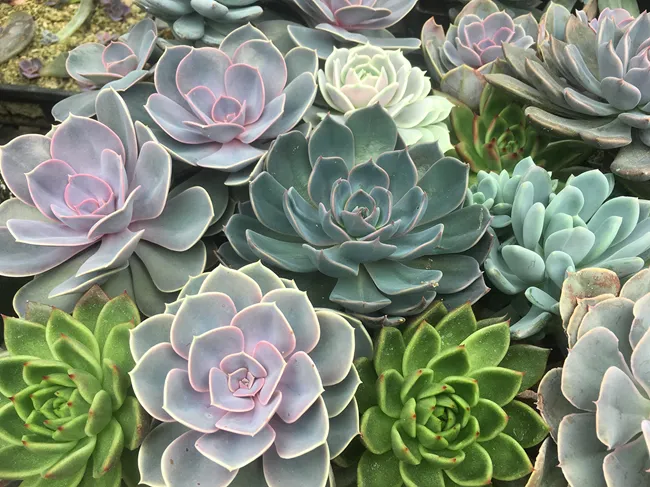Succulents are beloved for their unique shapes, vibrant colors, and low-maintenance care. These plants store water in their leaves, stems, or roots, allowing them to thrive in dry conditions. However, proper watering is crucial to keep them healthy. Overwatering can lead to root rot, while underwatering can cause shriveled leaves. This guide will help you understand how often to water small succulents and the best practices to keep them thriving.
Understanding Succulent Water Needs
What Makes Succulents Unique?
Succulents have adapted to arid environments by storing water in their tissues. This adaptation allows them to survive periods of drought. However, it also means they are sensitive to overwatering. Their roots prefer to dry out between waterings, mimicking the natural cycle of heavy rain followed by dry spells in their native habitats.
Factors Affecting Watering Frequency
Several factors influence how often you should water your small succulents:
Season: Succulents grow actively in spring and summer, requiring more water. In fall and winter, they enter dormancy and need less frequent watering.
Light Exposure: Plants in bright, direct sunlight may dry out faster than those in indirect light.
Temperature and Humidity: Higher temperatures and lower humidity levels increase evaporation, necessitating more frequent watering.
Soil Type: Well-draining soil prevents water from sitting around the roots, reducing the risk of rot.
Container Size and Material: Smaller pots and porous materials like terracotta dry out faster than larger pots or non-porous materials like plastic.
General Watering Guidelines
Spring and Summer (Active Growth)
During the growing season, small succulents typically need watering every 7 to 14 days. Always check the soil moisture before watering. If the top inch of soil is dry, it’s time to water. Use the “soak and dry” method: water thoroughly until it drains out of the bottom, then wait until the soil is completely dry before watering again.
Fall and Winter (Dormancy)
In cooler months, succulents’ growth slows, and they require less water. Water every 3 to 4 weeks, ensuring the soil is dry before each watering. Overwatering during dormancy can lead to root rot.
How to Check Soil Moisture
Before watering, it’s essential to check if your succulent needs it:
Finger Test: Insert your finger about an inch into the soil. If it feels dry, it’s time to water.
Wooden Stick Test: Insert a wooden stick into the soil. If it comes out clean, the soil is dry. If soil sticks to it, wait before watering.
Moisture Meter: These tools provide a reading of the soil’s moisture level, helping you determine when to water.
Best Watering Techniques
Soak and Dry Method
This is the most recommended method for watering succulents:
Water Thoroughly: Pour water until it drains out of the bottom of the pot.
Drain Excess Water: Ensure no water remains in the saucer or tray beneath the pot.
Wait to Dry: Allow the soil to dry out completely before the next watering.
This method mimics natural rainfall patterns and promotes healthy root growth.
Avoid Misting
Misting can lead to excess moisture on leaves, promoting rot and fungal diseases. It’s better to water the soil directly.
Recognizing Signs of Overwatering and Underwatering
Overwatering
Signs include:
Mushy or translucent leaves: Indicates waterlogged tissues.
Black spots: May signal rot.
Leaves falling off easily: A common symptom of root rot.
Underwatering
Signs include:
Wrinkled or shriveled leaves: Indicates dehydration.
Dry, crispy leaf edges: A sign of prolonged dryness.
Slow growth: Lack of water can stunt development.
Special Considerations for Small Succulents
Container Choice
Small succulents often reside in tiny pots, which dry out faster. Ensure these containers have drainage holes to prevent water accumulation. Terracotta pots are ideal as they allow moisture to evaporate quickly.
Soil Selection
Use a well-draining soil mix, preferably one designed for cacti and succulents. This prevents water from sitting around the roots.
Environmental Factors
In humid climates, succulents may require less frequent watering. Conversely, in dry environments, they may need water more often. Always adjust your watering schedule based on your local conditions.
Conclusion
Proper watering is crucial for the health of small succulents. By understanding their unique needs and monitoring soil moisture, you can establish a watering routine that keeps your plants thriving. Remember, it’s better to underwater than overwater. Always let the soil dry out completely between waterings, and adjust your schedule based on the season and environment.
With these guidelines, your small succulents will remain healthy and vibrant, adding beauty to your home or garden.
Related Topics:


